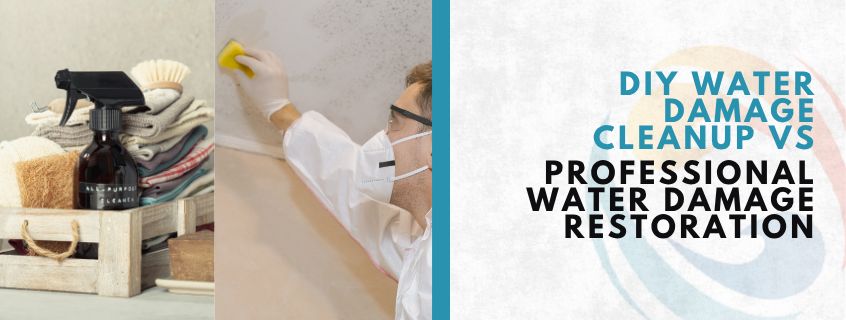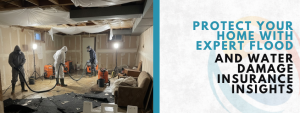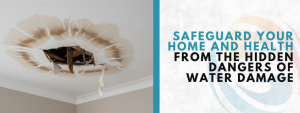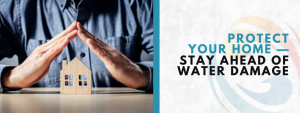
It all starts with an innocent leak. Maybe a pipe bursts in the laundry room. Or you come home from a weekend trip to find water seeping through your living room carpet. Whether it’s a slow drip or a sudden flood, water damage can quickly turn a cozy home into a mess of soggy rugs, peeling walls, and a musty smell that won’t go away. At this moment, many homeowners ask the same question: “Should I try a diy water damage cleanup, or is it better to call the professionals?”
Let’s walk through what it means to handle water damage on your own, when it might work, when it might backfire, and why choosing the right approach can save you money, time, and your peace of mind.
Understanding the Basics of Water Damage
Water damage can come from many places—leaking roofs, overflowing sinks, broken washing machines, or natural flooding. While the source might differ, the consequences often look the same:
- Warped wooden floors
- Stained ceilings
- Moldy drywall
- Electrical hazards
- Weak structural supports
Before choosing diy water damage cleanup, you need to understand what kind of water you’re dealing with. Experts classify water into three main categories:
| Water Type | Description | Health Risk |
| Clean Water | From broken pipes or rainwater | Low |
| Gray Water | From appliances like dishwashers or washing machines | Medium |
| Black Water | From sewage or floodwater from outside | High |
Clean water might seem manageable with towels and fans, but gray and black water need more serious attention. If there’s any doubt, it’s safest to get help from specialists who can assess the situation thoroughly. You don’t want to risk your health or your home by underestimating the damage.
What Happens During DIY Water Damage Cleanup?
Most homeowners considering diy water damage cleanup have good intentions. After all, why pay someone when you think you can dry it out with a few fans and elbow grease? That might work for small spills. But here’s a closer look at what “DIY cleanup” typically involves:
- Finding the source – You have to stop the leak or overflow immediately.
- Removing water – Wet vacuums, mops, or buckets are used to suck up the standing water.
- Drying the area – Fans, open windows, and dehumidifiers are used for days or even weeks.
- Checking for mold – Mold can show up in 24 to 48 hours, especially in humid spaces.
- Fixing damaged materials – You may need to replace drywall, insulation, or carpet padding.
While some people handle small, surface-level incidents just fine, issues start to multiply when water has already seeped under floors or into walls. Without special tools like moisture meters and thermal cameras, it’s easy to miss the wet spots.
Here’s a list of what’s commonly missed during a DIY attempt:
- Hidden moisture: Water travels under tile, behind baseboards, and into insulation.
- Mold growth: You might dry the surface, but mold thrives in deep, damp layers.
- Odors: Musty smells indicate mold or mildew growth that wasn’t treated.
- Structural damage: Wood rot or warping may go unnoticed until it’s too late.
This is where things get tricky. Even the most determined diy water damage cleanup can leave behind small pockets of moisture that lead to big problems later.
When Does DIY Make Sense?
There are times when rolling up your sleeves and tackling the mess is the right move. If the water damage is limited to a small, clean spill and you act fast, you might be able to manage it successfully.
A few green lights for a DIY cleanup:
- The water came from a clean source (like a leaky faucet).
- The area is small (under 10 square feet).
- You caught the leak within an hour or two.
- There’s no carpet, drywall, or insulation affected.
- You have proper fans and a dehumidifier.
If all these conditions line up, it’s reasonable to try diy water damage cleanup. Just be prepared to monitor the area for at least a week, checking for any signs of moisture, mold, or bad smells.
And here’s an alphabetical list of handy tools you might want on hand for this job:
- Air movers
- Buckets
- Dehumidifiers
- Fans
- Gloves
- Moisture meters
- Plastic sheets
- Wet-dry vacuums
Having these supplies nearby can make a huge difference in how effective your cleanup efforts are.
Why Professional Water Damage Restoration Is Often Worth It
When it comes to serious damage, it’s not about convenience—it’s about safety, savings, and long-term value. Professional water damage restoration teams come equipped with training, tools, and experience that most homeowners simply don’t have.
Here’s what happens when you hire a trusted restoration service:
- Assessment: Trained technicians identify the type of water and extent of damage.
- Water extraction: They use industrial pumps and vacuums for fast, thorough removal.
- Drying and dehumidifying: Advanced systems dry areas deeply, not just on the surface.
- Sanitization: They clean and disinfect to eliminate bacteria and mold.
- Restoration: They repair or replace damaged drywall, flooring, and more.
Hiring experts can often prevent future mold issues or hidden structural problems. And many companies work directly with insurance providers to make the claims process smoother.
If you want to trust your home with the best help possible, consider checking out emergency water damage experts near you. You’ll be working with professionals who specialize in keeping homes safe and restoring them after a crisis.
Risks of Going the DIY Route
Sometimes, doing it yourself feels empowering. But with water damage, cutting corners can be costly. The hidden dangers often aren’t visible until weeks later.
Here are a few red flags that come from a failed or incomplete diy water damage cleanup:
- Mold behind walls
- Sagging ceilings
- Swollen wood
- Electrical shorts
- Foul odors
Not only are these issues expensive to repair, but they can also make your home unsafe. And if your insurance finds out that the damage got worse because of neglect or a failed DIY job, your claim may be denied.
Here’s a quick table showing the difference between DIY vs Professional Costs:
| Task | DIY Average Cost | Professional Cost |
| Water extraction (basic tools) | $100–$300 | $500–$1,200 |
| Equipment rental (fans, dehumidifiers) | $50–$200/day | Included in the service |
| Mold treatment | $200–$600 | $700–$2,000 |
| Structural repairs | Varies | Varies |
| Total average | $400–$1,100+ | $1,500–$4,000+ |
While the DIY numbers seem smaller upfront, they can balloon later if the job isn’t done properly.
Real-Life Story: A Tale of Two Basements
To understand the contrast better, imagine two neighbors: Lisa and Mike.
Lisa noticed a small puddle in her finished basement. She used towels, opened the windows, and ran a fan for a day. Things looked dry, so she thought all was well.
Mike, in the house next door, had the same leak. Instead of guessing, he called a local restoration team. They discovered moisture behind the walls, pulled up the wet carpet, and used professional-grade equipment to dry everything out.
Two weeks later, Lisa’s basement had a musty smell, and she found mold spreading behind her bookshelf. She spent twice as much fixing the damage that followed her diy water damage cleanup. Mike, meanwhile, had peace of mind and zero problems afterward.
It’s a lesson many homeowners learn the hard way. Just because it looks dry doesn’t mean it is.
Knowing When to Call for Help
Not every water incident needs professionals, but knowing when to call them can make a huge difference. Here’s a list of signs that it’s time to put the mop down and pick up the phone:
- The water came from outside or the sewer.
- You smell something musty even after drying.
- Walls feel soft or spongy.
- The damage covers a large area (more than 10 feet).
- Mold starts to appear.
- You’ve cleaned it before, and the damage returned.
For anyone dealing with a water emergency in the Malibu area, there’s expert support ready to respond. Don’t wait—check out the trusted Water Damage Restoration team for immediate, safe service.
Tips for Preventing Water Damage Before It Starts
Whether you choose to DIY or hire help, prevention is always the best plan. Here are practical ways to protect your home before a leak or flood ever starts:
- Inspect appliances: Check hoses and connections on your washing machine and dishwasher.
- Clean gutters: Blocked gutters can cause rainwater to spill into your home.
- Monitor water pressure: High pressure can stress pipes and cause leaks.
- Seal windows and doors: Cracks let in water during storms.
- Know your shut-off valve: In an emergency, turning off water quickly matters.
It’s also smart to keep a cleanup kit nearby with essentials like gloves, towels, fans, and a portable wet/dry vacuum. You don’t want to scramble during a crisis.
The Final Word: Confidence Comes from Being Prepared
Water damage isn’t just about soggy rugs—it’s about protecting your family, your home, and your future comfort. While diy water damage cleanup can work for small, easy-to-manage incidents, it has its limits. Trying to handle a serious water issue on your own might seem like a good idea today, but it can create a much bigger problem tomorrow.
The decision comes down to confidence. If you know it’s clean water, the area is small, and you act fast, a DIY approach may be fine. But if you hesitate, if things feel overwhelming, or if you simply want the job done right the first time, calling the pros is the best choice.
Trust your instincts—and if you ever need fast, reliable support, remember that the team at 770 Water Damage & Restoration is just a click away.
Top Questions People Ask About Cleaning Up Water Damage
Can I clean up water damage myself or should I call a professional?
You can clean up minor water damage yourself, especially if the water is clean and the affected area is small. However, for larger incidents, gray or black water, or damage that affects walls, flooring, or insulation, it’s best to call professionals. A trained restoration team uses industrial-grade equipment and follows strict drying and sanitization protocols to ensure your home is fully safe and restored—something that’s hard to achieve with household tools.
What are the dangers of doing DIY water damage cleanup?
DIY water damage cleanup might seem manageable at first, but it often misses hidden moisture inside walls or under flooring. These overlooked damp areas can lead to mold growth, structural damage, and even electrical hazards. Without professional-grade moisture detection tools and sanitization, your home could develop lingering problems that cost far more down the line.
How long does professional water damage restoration take?
The duration of professional water damage restoration depends on the extent of the damage, but most projects are completed within 3 to 7 days. This includes water extraction, industrial drying, dehumidification, and material repairs. Fast response time is critical, and the right team can work efficiently to minimize disruptions while restoring your home to pre-damage condition.
What services are included in professional water damage restoration?
Professional water damage restoration includes a full suite of services designed to protect both your home and your health. These services typically cover emergency water removal, advanced structural drying, mold and odor control, decontamination, and repair of damaged materials. The team also works closely with insurance providers to ease the claims process.
Why is it important to act quickly after water damage occurs?
Acting quickly after water damage is essential to limit the spread of moisture, mold, and structural damage. Within 24–48 hours, mold can begin to grow in hidden areas. Immediate action allows restoration professionals to remove water, dry out affected spaces thoroughly, and prevent further deterioration, which can protect both your property and your finances.






